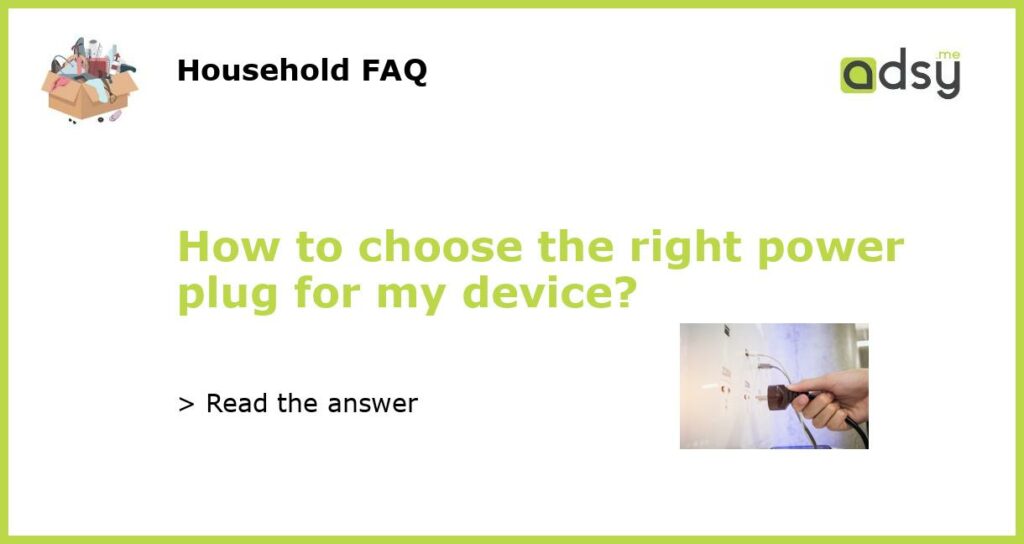Understanding Power Plug Types
When it comes to choosing the right power plug for your device, it’s important to understand the different types of plugs that exist. Power plugs can vary from country to country, so what works in one place may not work in another. The two main types of power plugs you’ll come across are the two-pronged and three-pronged plugs.
The two-pronged plug, also known as a Type A plug, is commonly found in North America, Central America, and parts of South America, Asia, and the Caribbean. This type of plug features two flat prongs that fit into outlets with two flat holes.
The three-pronged plug, also known as a Type B plug, is commonly found in North America, Central America, and parts of South America, Asia, and the Caribbean. This type of plug features two flat prongs and a grounding pin that fits into outlets with two flat holes and one round hole.
Checking Voltage and Frequency Requirements
In addition to understanding power plug types, it’s also important to check the voltage and frequency requirements of your device. Different countries have different voltage standards, which can vary from 110-120 volts to 220-240 volts. If your device is not compatible with the local voltage, you may need to use a voltage converter or transformer.
Similarly, frequency requirements can vary from country to country. While most countries use a frequency of 50 or 60 Hz, some countries may use a different frequency. Make sure to check the frequency requirements of your device and ensure it matches the local standards.
Researching Local Power Plug Standards
Before traveling or moving to a new country, it’s essential to research the local power plug standards. Each country may have its own unique power plug type, voltage, and frequency requirements. By knowing what to expect, you can ensure that you have the right power plug for your device.
There are several resources available online that provide information on power plug standards by country. Websites like Power Plugs and Sockets and World Standards offer comprehensive guides and databases of power plug types and standards around the world. By using these resources, you can find the specific power plug type you need for your destination.
Using Universal Travel Adapters
If you frequently travel to different countries or are unsure about the power plug type in a particular destination, investing in a universal travel adapter can be a convenient solution. Universal travel adapters are designed to work with multiple power plug types and can be easily adjusted to fit different outlets.
These adapters typically come with different plug attachments that can be switched out depending on the destination country. Universal travel adapters often have built-in voltage converters as well, making them suitable for a wide range of devices. However, it’s important to note that these adapters may not be compatible with all devices, especially those with specific voltage or frequency requirements.
Seek Professional Advice
If you’re still unsure about which power plug to use for your device or how to navigate the different power plug types and standards, it’s always a good idea to seek professional advice. Local electricians or electronics stores can provide guidance on power plug compatibility and help you choose the right power plug for your device.
Additionally, manufacturers of electronic devices often provide user manuals or online resources that outline the specific power plug requirements for their products. Checking these resources can give you peace of mind and ensure that you choose the correct power plug for your device.






